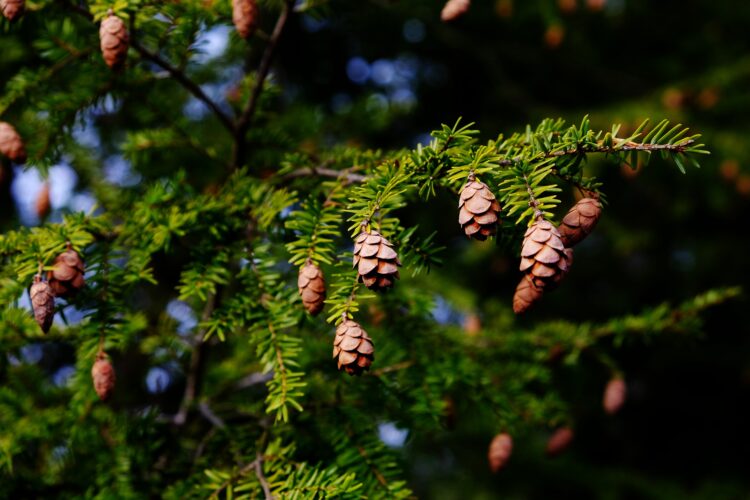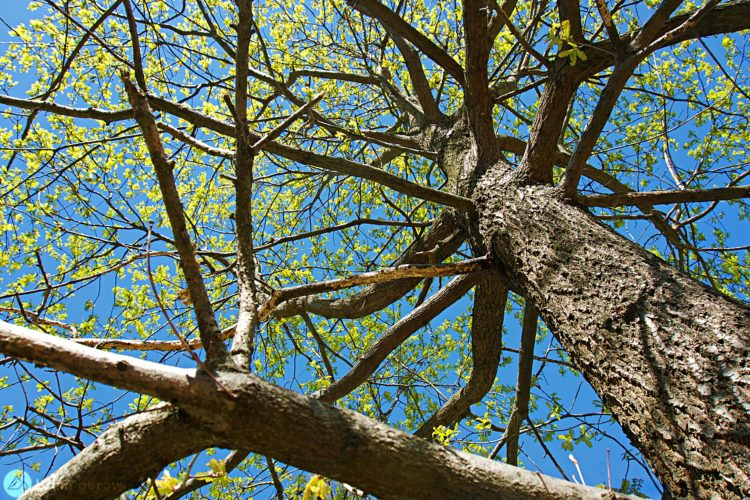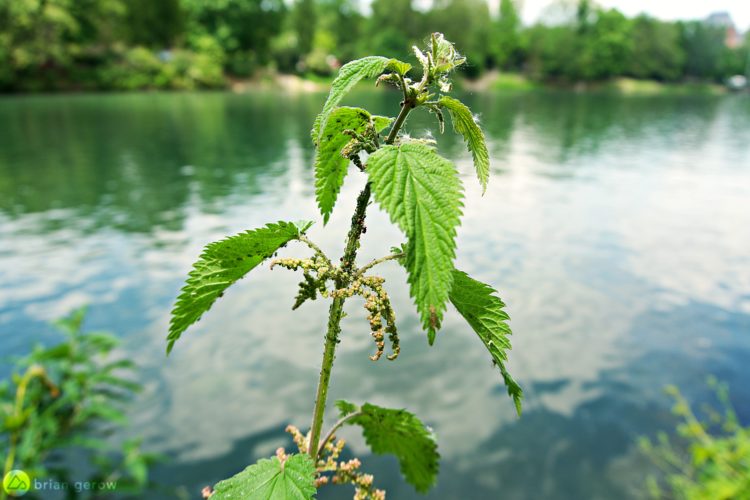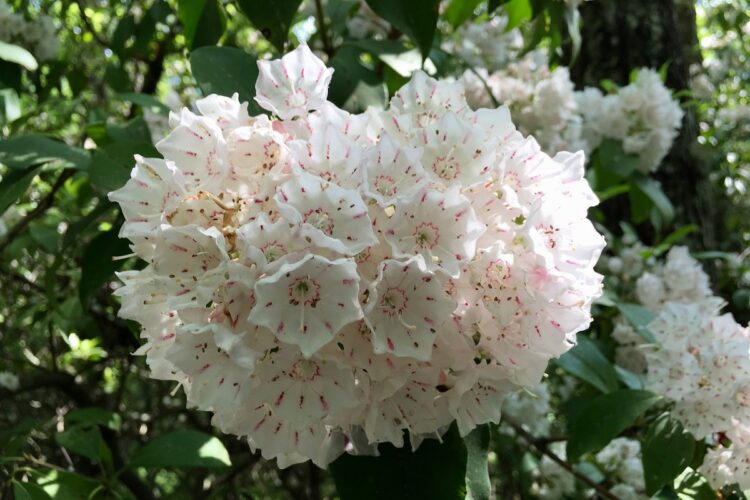
For this installment of “What’s that alongside the trail?” we’re going to take a look at hawthorn trees (Crataegus). We won’t peek too closely, as some of the several hundred species of hawthorn trees and shrubs are covered in thorns, and the ones we photographed were singing with busy pollinators.
Hawthorns are native to the temperate trails in Asia, Europe, North Africa, and North America. According to a species overview by James B Phipps, the name Crataegus is thought to come from the Greek word Krataigon, meaning thorn, Kratos meaning strength, and akis which translates to sharp-tip. If that’s all correct, the Greek species must have been quite prickly. The tree has several other names, including the May-tree and Mayflower.

The easiest way to identify most hawthorn trees is by their thin, parsley-shaped leaves that have deep lobes and a semi-transparent thickness that helps to make their veins stand out clearly. While the leaves could be confused with some oak species, the clusters of white flowers in the spring that bear both reproductive organs at their center and edible red berries in autumn are clear indicators that your trailside tree is in fact a hawthorn. Most hawthorn species can be found in drier climates, rooted in a variety of soils, between low-lying plains and lower hillsides. The bulbous and bushy trees can grow up to 40 feet tall, and some specimens live up to 400 years.

Hawthorn berries have one or more seeds that are toxic to humans and need to be removed before the fruit is eaten. The berries have been used to make a wide variety of foods and medicines, from hawthorn extract to wines and jam. Young leaves and flowers are also edible.
The list of medicinal uses for hawthorn trees and shrubs is impressive, including chest pain reduction, improving symptoms of heart failure, helping with arrhythmias, anxiety, muscle spasms, and other conditions. An article by Mount Sinai states that “A large study found that a standardized hawthorn supplement was effective in 952 people with heart failure. The study compared conventional methods of treating heart failure (with different medications) with hawthorn alone and in addition to the drugs. After 2 years, the clinical symptoms of heart failure (palpitations, breathing problems, and fatigue) decreased significantly in people taking the hawthorn supplement. People taking hawthorn also took less medication for their condition.”
According to an article on Trees For Life, the hawthorn has deep roots in Celtic lore. “The hawthorn was one of, if not the, most likely tree to be inhabited or protected by the Wee Folk. In Ireland most of the isolated trees, or ‘lone bushes,’ in the landscape are said to be inhabited by fairies, were hawthorn trees. Such trees could not be cut or damaged in any way without incurring the often fatal wrath of their supernatural guardians.”

The hard and fine-grained wood of hawthorn trees is used to make all sorts of things, from brush and tool handles to boat parts and cabinets. If a hawthorn falls near you, check out The Wood Database for some crafty ideas.
In addition to pollinators, most birds and smaller woodland creatures live on and feed on hawthorn trees. In the fall, a native tree or shrub is the perfect spot for wildlife photography as countless birds will arrive to fatten on the red berries before migrating. Of course, spring is the time to photograph bees as they fill the trees with their rhythmic song.
In addition to the tree’s medicinal uses, First Nations peoples of Canada found a number of creative ways to employ the plant in their lives. One account reports that “A winter dance face paint was made from grease and hawthorn charcoal.” Additionally, “the dry, seedy fruits were eaten by many coastal groups both fresh and dried, often with oil or grease. They were not highly regarded, however.” And back to the health aspect, “the bark of black hawthorn was used to treat venereal disease, thin the blood, strengthen the heart, or reduce swellings, and it was [also] used in steam baths.” While not all hawthorn species have thorns, those that do have certainly come in handy. “The Thompson and Okanagan peoples used the thorns to pierce ears. The Lillooet and Gitxsan people made fish hooks from them.”
Please let us know which trailside plants you would like to learn a little more about and we will get digging.





















0 Comments